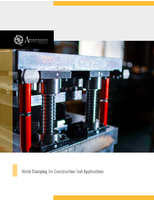Ceramic Coating protects metals and alloys.
Share:
Press Release Summary:
Microplasmic Process creates thick ceramic coating that resists wear, heat and aqueous corrosion, and is an electrical insulator. Light aluminum, magnesium, titanium or other alloy parts that are coated with process can replace heavier steel or composite materials. Other reactive metals, such as zirconium, vanadium and tantalum, can also be coated. Any coating thickness can be achieved with aluminum, magnesium, titanium and zirconium alloys.
Original Press Release:
The Patented Next Generation Of Anodizing [Micro-Arc Anodizing]
The Microplasmic Corporation, a research and development company, developed a unique ceramic coating technology, called the Microplasmic Process, for which the company has just received an US patent. The Microplasmic Process creates a thick ceramic coating that exhibits excellent resistance to wear, heat, and aqueous corrosion. Furthermore, the coating is an excellent electrical insulator. Light and inexpensive aluminum, magnesium and titanium, or other alloy parts, coated with the Microplasmic Process can replace the heavier steel, or the more expensive composite materials required by many industries - including transportation, medical, process, electronic, chemical, and others. Other reactive metals, such as zirconium, vanadium and tantalum, can also be coated by the microplasmic process for specialty applications. "The Microplasmic Process utilizes electrochemical micro-arc anodizing to produce an extremely hard ceramic coating," states Jerry Patel, President and CEO. "Any desired coating thickness can be achieved with all aluminum, magnesium, titanium and zirconium alloys. Moreover, in looking at the entire process itself, production is fast, uses inexpensive equipment and raw materials, and produces no hazardous wastes, thus making the Microplasmic Process an attractive and highly viable alternative to the traditional anodizing processes."




